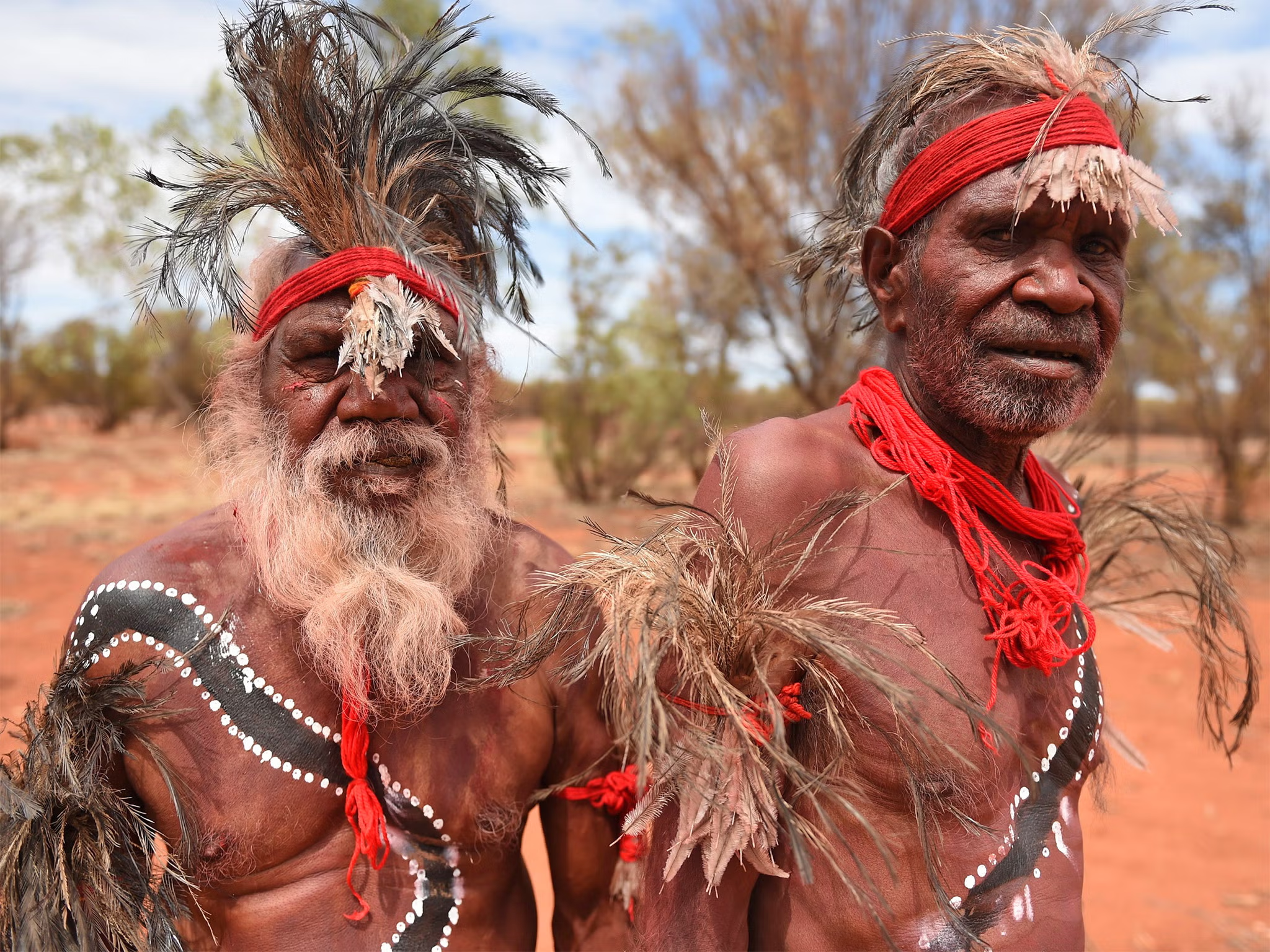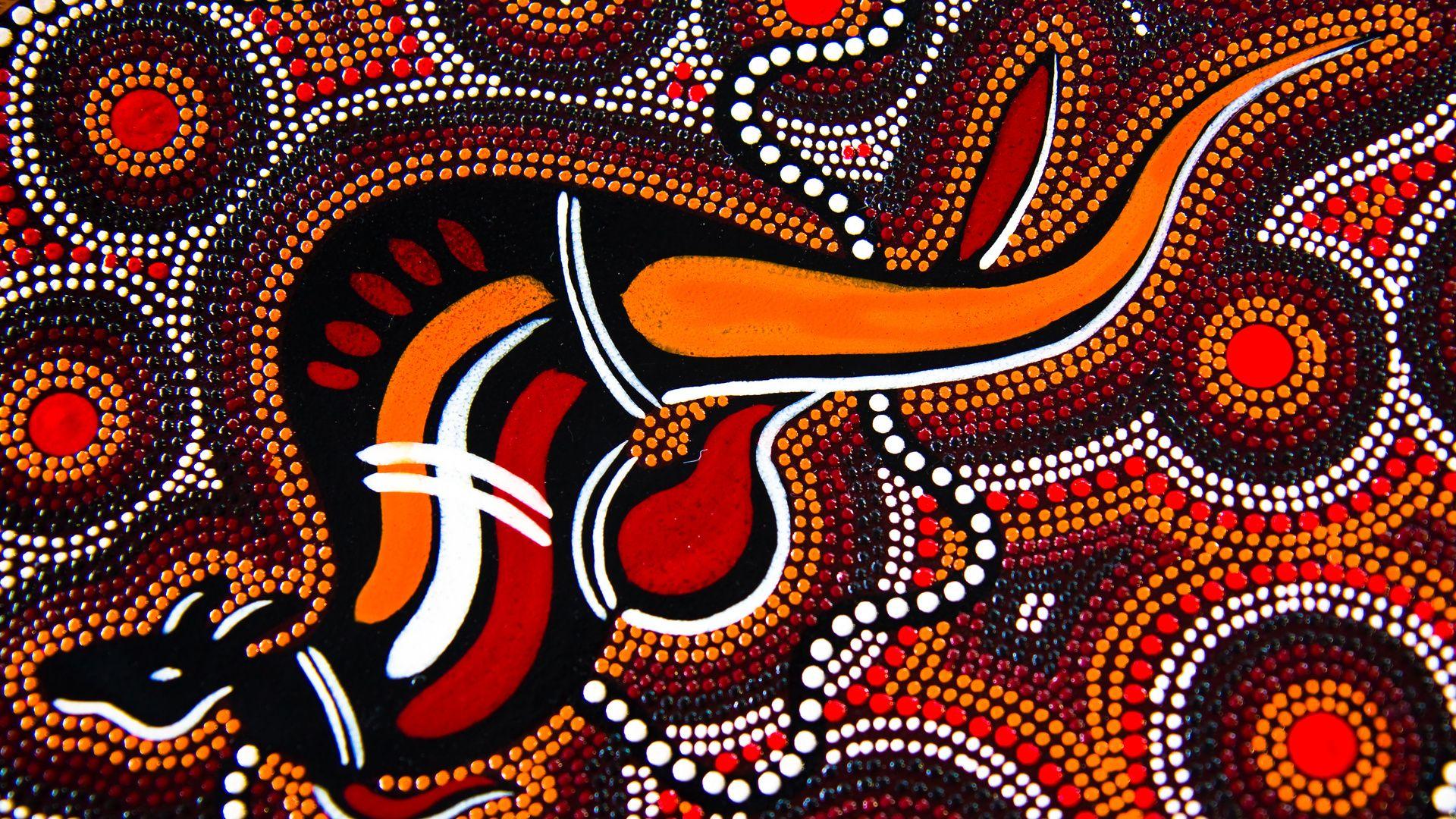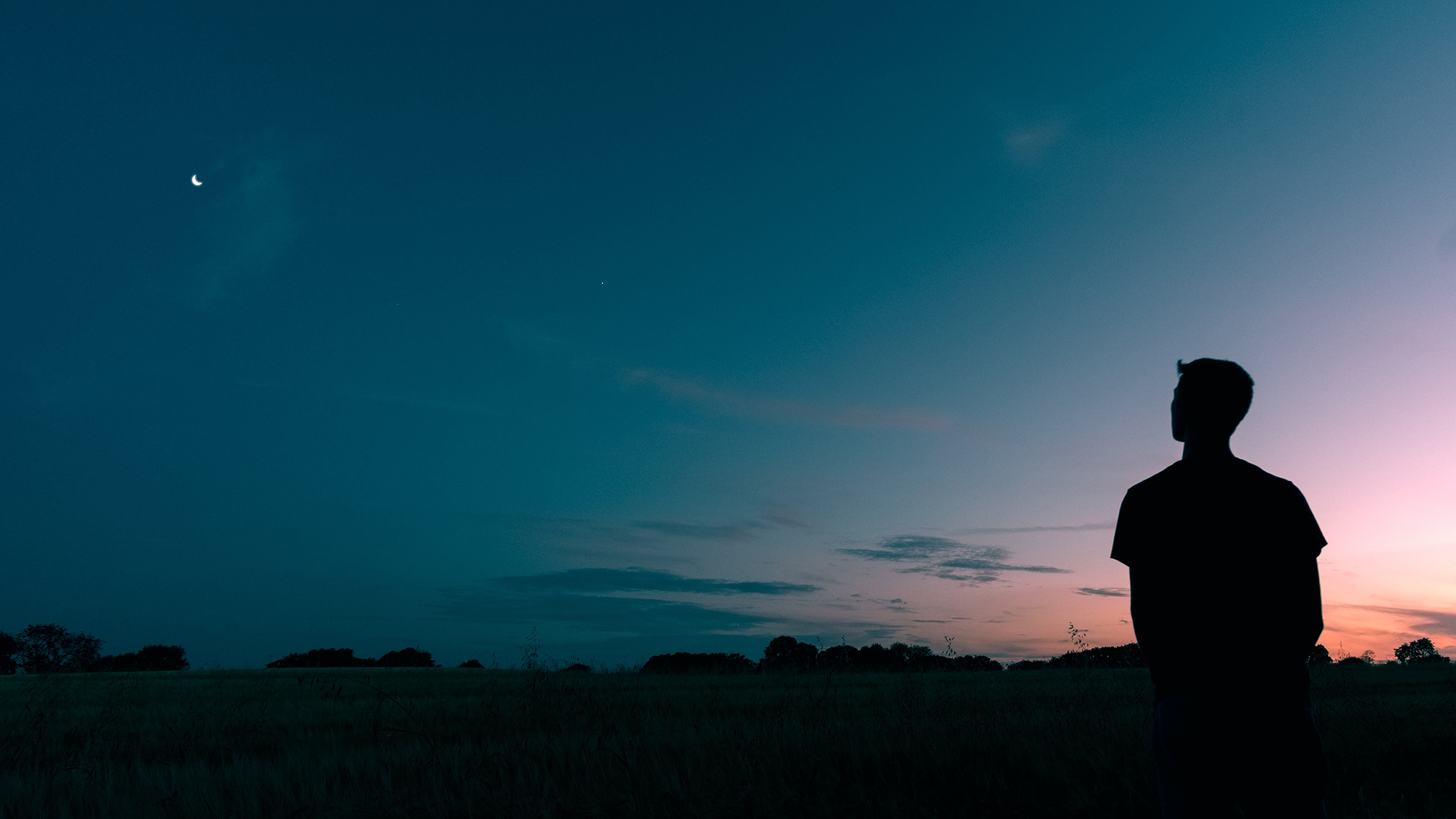Understanding Aboriginal Dreaming
The Spiritual Foundation
The Dreaming or Nguruvilu (pronounced “nooloo-wee-loo”) in the language of the Yolngu people from North East Arnhem Land, is a fundamental concept that underpins the spiritual foundation of Aboriginal culture. It’s a complex and multifaceted concept that encompasses not only the creation stories but also the laws that govern the universe, human behavior, and the natural world.
The Dreaming is often described as an ancestral being or a supernatural entity that created the world, its creatures, and the laws that govern them. These beings are believed to have traveled across the land, creating landscapes, plants, animals, and eventually, humans. The stories of their journeys and actions are known as Tjukurrpa, which are often retold in songs, dances, and artwork.
At its core, the Dreaming is a holistic understanding of the world that recognizes the interconnectedness of all things. It’s a spiritual framework that acknowledges the presence of ancestral beings within every aspect of life, from the land to humans themselves. This worldview is based on the idea that everything has a story or history associated with it.
The Dreaming is not just about creation stories; it’s also about understanding the laws and rules that govern human behavior, such as kinship systems, marriage practices, and social hierarchies. It provides a framework for living in harmony with the land and its creatures by respecting the ancestral laws and maintaining balance within the natural world.
The Dreaming is not static; it’s dynamic and constantly evolving. It’s a way of being that recognizes change as an integral part of life, allowing individuals to adapt and evolve alongside their communities. This understanding promotes resilience in the face of adversity, acknowledging that challenges are opportunities for growth and learning.
Understanding the Dreaming requires an appreciation for its complexities and nuances. It demands attention, respect, and a willingness to listen and learn from Elders and other knowledgeable individuals within Aboriginal communities. By embracing this spiritual foundation, we can foster greater empathy, understanding, and harmony with the natural world and its human inhabitants.
The Aboriginal Dream is a complex and multifaceted concept that underpins the spiritual and cultural practices of Indigenous Australians. It refers to the vast network of stories, songs, dances, and art forms that convey the ancestral creations and events that have shaped the country’s landscapes, ecosystems, and human societies.
The Aboriginal Dreaming, also known as the Dreamtime or the Jukurrpa, is a fundamental concept in Indigenous Australian culture. It encompasses the ancestral creations and events that have shaped the country’s landscapes, ecosystems, and human societies over thousands of generations.
At its core, the Dreaming refers to the stories, songs, dances, and art forms that convey these ancestral creations and events. These narratives are not just mythological tales but are deeply embedded in the culture and spirituality of Indigenous Australians, providing a rich understanding of their world view and connection to country.
There are six main regions or groups of Aboriginal people across Australia, each with its own distinct Dreaming stories, songs, dances, and art forms. These include:
- Kulin Nation (southern Victoria)
- Darug Nation (northern New South Wales)
- Warlu Wurrung Nation (eastern Victoria)
- Ngunnawal Nation (central Australia)
- Borroloola Region (northern Australia)
The Dreaming is often associated with the creation stories of ancestral beings, such as the Rainbow Serpent and the Great Spirit. These beings are said to have created the land, its features, and the first humans through a series of events that shaped the country’s landscapes and ecosystems.
The Aboriginal Dreaming has been passed down through generations through storytelling, song, dance, and art, providing a strong sense of identity and connection to culture. The stories are not just historical accounts but also convey spiritual truths about the world and our place within it.
The concept of the Dreamtime is deeply connected to the Aboriginal understanding of time and space. It encompasses multiple dimensions and levels of reality, with the physical world being just one aspect of a larger cosmological framework.
In this context, time is not seen as linear but rather cyclical, with events repeating themselves in an eternal cycle. The past, present, and future are all connected, and the Dreaming stories convey this interconnectedness.
The Dreamtime is also closely tied to the Aboriginal understanding of the land and its ecosystems. The ancestral creations and events described in the Dreaming stories are believed to have shaped the country’s landscapes, creating features such as mountains, rivers, and deserts.
This understanding is reflected in the traditional practices of Indigenous Australians, who often live in harmony with nature and seek to maintain balance within their environment. This approach is essential to preserving the health of ecosystems and ensuring the continuation of life on earth.
The Role of Dreams in Aboriginal Culture

Guiding Life and Decision-Making
In Aboriginal culture, dreams play a significant role in guiding life and decision-making. The Aboriginal people believe that dreams are a means of communication with their ancestors and the spiritual realm. Dreams are not just random events that occur while sleeping, but rather a way for individuals to access knowledge, guidance, and wisdom from their ancestors.
The Dreamtime, also known as the “Dreaming,” is a central concept in Aboriginal culture that refers to the period of creation when ancestral beings roamed the earth, creating animals, plants, and features of the landscape. The Dreamtime is still active today, and dreams are seen as a way for individuals to connect with this timeless and ongoing process.
Aboriginal people believe that everyone has a totem, which is an animal or object that is associated with their family or community. Dreams can reveal information about one’s totem, providing insights into personal strengths, weaknesses, and life paths. The interpretation of dreams is a shared responsibility between the individual who had the dream and the community Elders.
Aboriginal people have a unique approach to dream interpretation, which involves considering multiple aspects of the dream, including its imagery, emotions, and symbolism. They believe that dreams can offer guidance on various life matters, such as relationships, health, and career choices. Dreams are also seen as a way to resolve conflicts, heal emotional wounds, and restore balance in one’s life.
The role of dreams in Aboriginal culture is not limited to personal guidance; they also play a significant part in community decision-making. Elders often use dreams as a source of wisdom when making important decisions, such as resolving disputes or planning ceremonies. The collective interpretation of dreams can bring the community together and foster a deeper understanding of their shared cultural heritage.
In addition to its practical applications, dream interpretation is also a way for Aboriginal people to connect with their ancestors and honor their traditions. By paying attention to their dreams and sharing them with others, individuals can strengthen their bond with their community and tap into the collective wisdom of their culture.
Aboriginal people believe that dreams have the power to transform and heal individuals and communities. Through dream interpretation, they can gain insights into their personal lives, connect with their heritage, and access guidance from their ancestors. This unique approach to dreamwork is an integral part of Aboriginal culture, guiding life decisions and fostering a deeper understanding of the world.
The significance of dreams in Aboriginal culture has been passed down through generations, and it continues to play a vital role in modern times. By honoring this ancient wisdom, individuals can tap into the spiritual power of their dreams and connect with their ancestors in meaningful ways. Whether personal or collective, dream interpretation is an essential aspect of Aboriginal spirituality, guiding life choices and fostering a deeper understanding of one’s place within the world.
In Aboriginal culture, dreams are a source of guidance and wisdom. They help individuals navigate life’s challenges and make informed decisions about important issues such as hunting, gathering, and marriage. The Dreaming also informs the concept of “songlines,” which describe the pathways traveled by ancestral beings and provide a map for navigating the country.
Dreams play a vital role in Aboriginal culture, serving as a source of guidance and wisdom for individuals. They help people navigate life’s challenges and make informed decisions about important issues, such as hunting, gathering, and marriage.
The Dreaming is a fundamental concept in Aboriginal culture, referring to the time when ancestral beings created the world and its features. It is believed that these ancestral beings still exist today, guiding their descendants through various forms of communication, including dreams.
Aboriginal people believe that dreams are messages from the spirit world, offering guidance on important life issues. They often interpret dreams in a holistic manner, considering multiple layers of meaning and symbolism.
The Concept of Songlines
The Dreaming also informs the concept of “songlines,” which describe the pathways traveled by ancestral beings. These songlines provide a map for navigating the country and are believed to hold spiritual power. They often overlap with physical paths, such as rivers and mountain ranges.
How Songlines Work
- The songlines are like a network of invisible pathways that crisscross the land.
- They are believed to hold spiritual power and guide people through life’s challenges.
- Aboriginal people often travel along these songlines, using them as a way to connect with their ancestors and the natural world.
In summary, dreams play a significant role in Aboriginal culture, serving as a source of guidance and wisdom. The Dreaming informs the concept of songlines, which provide a map for navigating the country and offer spiritual power and guidance.
Interpreting Dreams in the Context of the Dreaming
Tapping into Ancestral Knowledge
The interpretation of dreams in the context of The Dreaming, also known as Aboriginal Dreamtime, is a complex and spiritual practice that has been an integral part of Indigenous Australian culture for thousands of years.
According to traditional Aboriginal beliefs, The Dreaming refers to the time when the world was created by ancestral beings who traveled across the land, creating animals, plants, and features such as mountains and rivers.
The stories of these ancestral beings are known as “Dreamtime stories” or “myths,” and they contain spiritual significance that is still revered today.
Key Principles:
- The interconnectedness of all things: The Aboriginal view of the world sees everything as connected, from humans to animals, plants, and landscapes. This connection is believed to be spiritual in nature.
- The Dreamtime as a present reality: For Aboriginal people, The Dreaming is not just a historical event but an ongoing reality that influences everyday life.
- Dreams as messages from the ancestors: Dreams are believed to carry messages from the ancestral beings who created the world. These messages can offer guidance and wisdom for navigating life’s challenges.
- The importance of interpretation: Dreams need to be interpreted by a qualified Dreamworker or elder to unlock their spiritual significance.
- Respect, reciprocity, and responsibility: Aboriginal people believe in respecting the ancestors and the land through reciprocal relationships that promote balance and harmony within the community.
To interpret dreams in this context, one needs to tap into Ancestral Knowledge by:
Tapping into Ancestral Knowledge:
- Establishing a connection with the land: Develop a deep respect and understanding of the local landscape and its stories.
- Seeking guidance from elder Dreamworkers: Consult with experienced and qualified individuals who can provide insight into the spiritual significance of dreams.
- Using dream language: Learn to listen to the symbolic language of dreams, which often contains hidden meanings that require interpretation.
- Respecting confidentiality and protocols: Be aware of cultural protocols and respect confidentiality when sharing or interpreting dreams.
- Practicing self-reflection and journaling: Reflect on your own experiences, thoughts, and emotions to develop a deeper understanding of your connection with the Dreamtime.
In conclusion, interpreting dreams in the context of The Dreaming requires a deep respect for Ancestral Knowledge, a willingness to learn from traditional practices, and an openness to spiritual growth. By tapping into this ancient wisdom, individuals can gain a deeper understanding of themselves and their place within the world.
Aboriginal dream interpretation is not just about understanding personal dreams, but also tapping into the collective knowledge and wisdom encoded in the ancestral stories. This involves considering the specific context of a dream, including the location, time of day, and emotions experienced during it. By doing so, individuals can gain insight into their place within the wider world and make meaningful connections with their ancestors and the land.
The art of interpreting dreams in the context of the Dreaming is a profound spiritual practice that has been passed down through generations of Indigenous Australian communities. It’s not just about understanding personal dreams, but also tapping into the collective knowledge and wisdom encoded in the ancestral stories.
Aboriginal dream interpretation recognizes the interconnectedness of all things, including people, animals, plants, and landforms. By considering the specific context of a dream, including the location, time of day, and emotions experienced during it, individuals can gain insight into their place within the wider world.
The Dreaming is a complex web of stories that explain the creation of the world, the laws that govern it, and the responsibilities of all living beings. It’s through this framework that Aboriginal people understand the purpose and meaning behind their dreams.
When interpreting a dream in this context, one must consider the emotions experienced during the dream as well as the role of animals and other creatures within the story. The Dreaming emphasizes the importance of relationships and reciprocity between humans and the natural world.
The location and time of day of the dream are also crucial factors in understanding its meaning. For example, a dream that takes place at dawn may symbolize new beginnings or fresh starts, while a dream set during sunset may represent closure or completion.
By considering these elements, individuals can tap into the collective knowledge and wisdom encoded in the ancestral stories and gain a deeper understanding of their place within the world. This connection to the land, ancestors, and community is at the heart of Aboriginal dream interpretation.
The practice also acknowledges the importance of respect, reciprocity, and responsibility towards the natural world and all living beings. It encourages individuals to take an active role in maintaining balance and harmony within their community and the environment.
In this way, interpreting dreams in the context of the Dreaming offers a powerful tool for personal growth, healing, and spiritual development, while also deepening our understanding of the interconnectedness of all things.
- Buying Fish Dream Meaning: What Does Buying Fish Represent In Your Dream? - September 16, 2024
- Banjo Dream Meaning: What Does A Banjo Mean In Your Dream? - September 15, 2024
- Band Dream Meaning: What Does It Mean In Your Dream? - September 15, 2024




